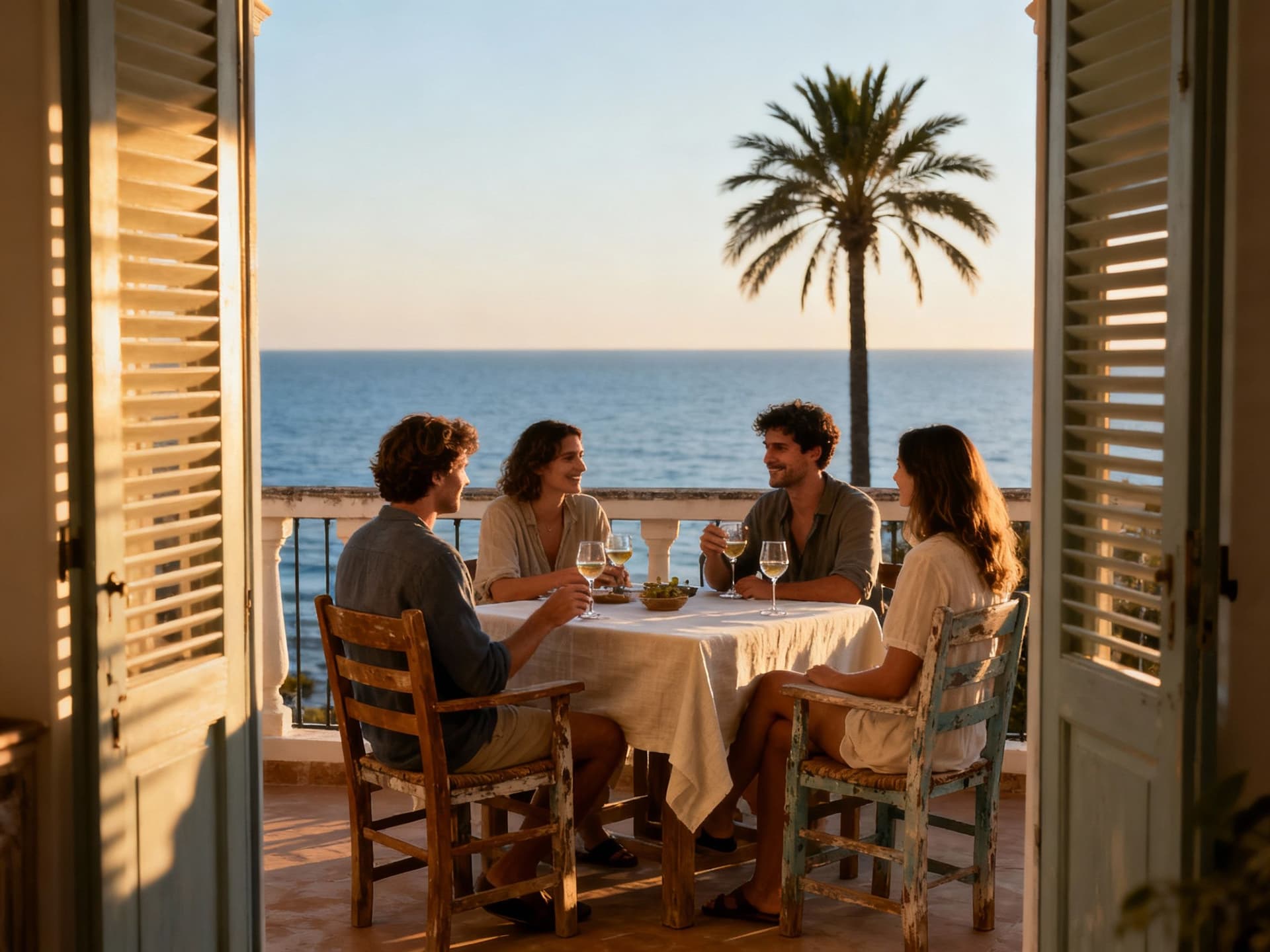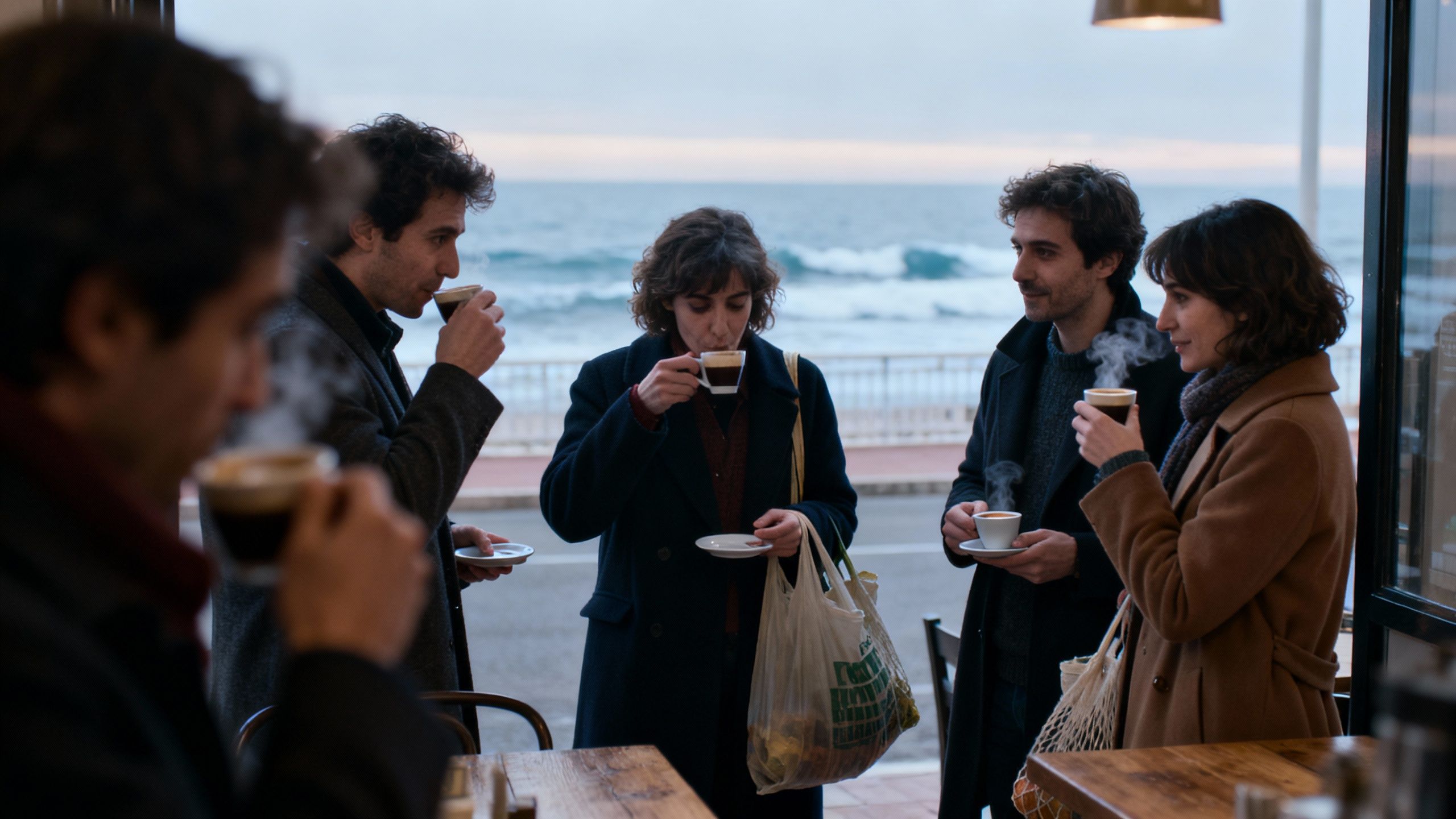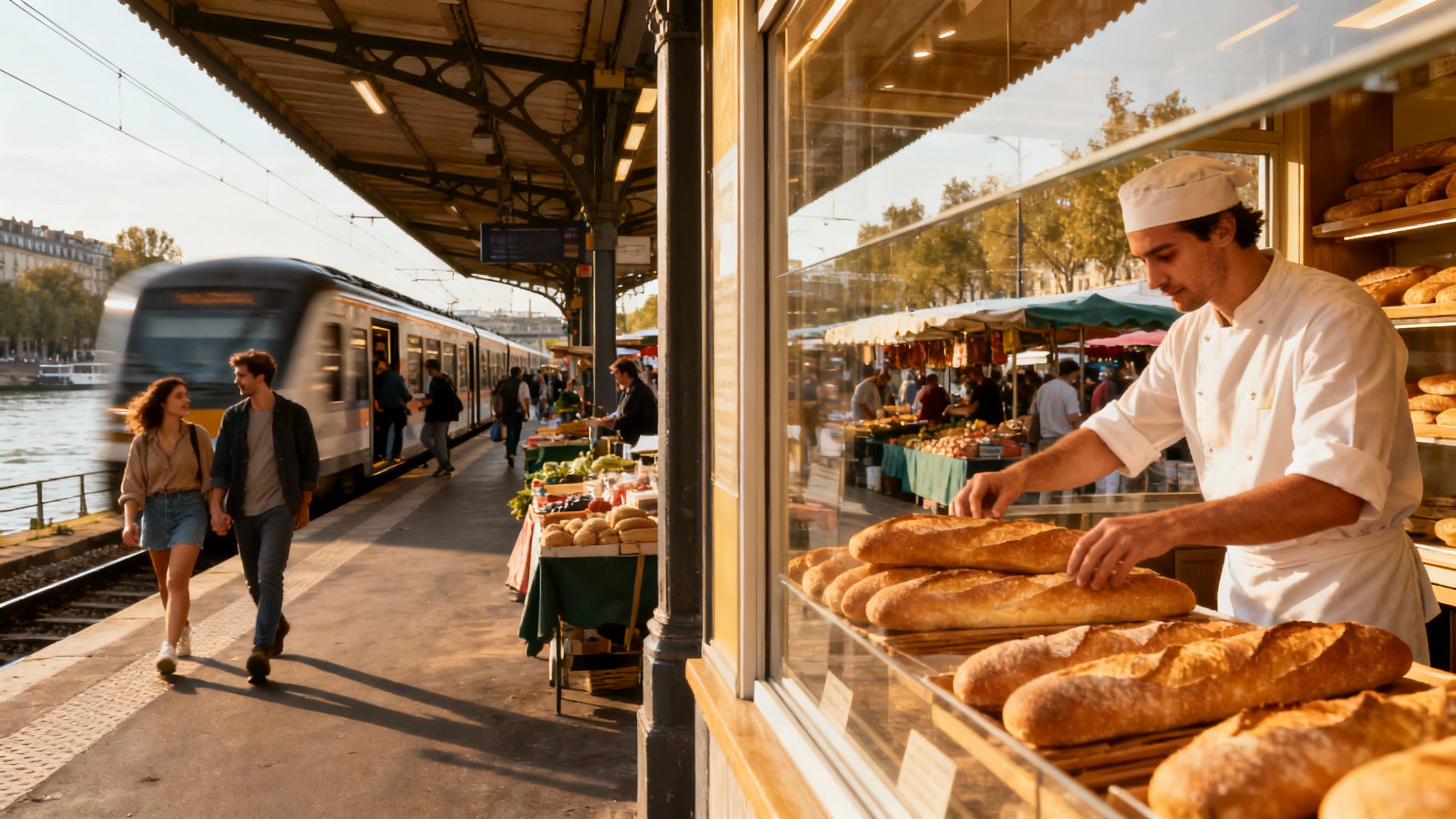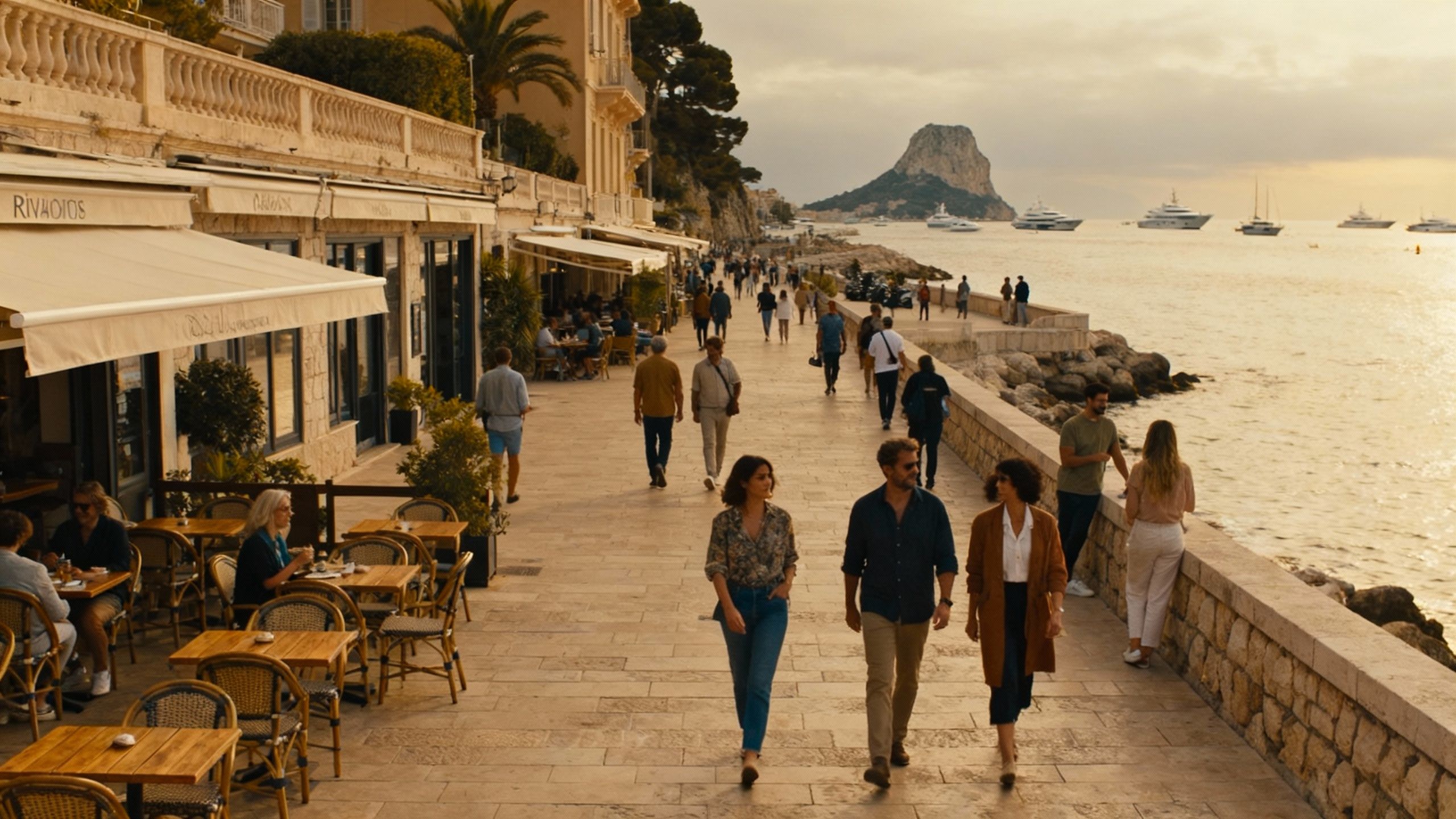Coastal France: Seasonal Rhythms, Real Costs
Coastal France is seasonal, specific and nuanced — match neighborhoods to real rhythms and budget acquisition costs (typically 7–8%).
Imagine sipping an espresso on Rue d'Antibes at 9am, watching shopkeepers sweep the pavement while the sea glints beyond palm trees. France's coastal towns combine everyday rituals — markets, midweek aperitifs, school runs along promenades — with property markets that don't behave as a single animal. If you think "the Riviera equals unstoppable price inflation," read on: the truth is more textured and useful.
Living the French Coastal Life

Coastal France is not a single lifestyle. From the terraces of Nice's Old Town to sleepy oyster ports on the Atlantic, each place has its daily rhythm. In high season the promenades pulse; in winter they empty and reveal the details — stonework, light, a quieter local life. These seasonal shifts shape both how you'll live and what you should expect from property values. Market data shows strong regional variation across the coast.
Neighborhood spotlight: Nice, Antibes, and Juan-les-Pins
Stroll from Place Masséna toward the Promenade des Anglais and you feel a city shaped by sun and movement: early swimmers, boulangeries opening, galleries closing late. Antibes' Vieil Antibes trades the Riviera gloss for narrow streets, seafood stalls at Marché Provençal, and beaches you can reach on foot. Juan‑les‑Pins keeps a younger, livelier evening scene. Each is walkable in a different way — a key lifestyle tradeoff when choosing flat versus villa.
Food, markets and weekend routines
Saturday markets set the tempo: buy tomatoes, socca, cheese and plan a languid lunch under plane trees. In smaller Atlantic towns the market offers oysters at midday and a different pace. Expect the calendar to revolve around food festivals, tram schedules, and school holidays — not just property listings. Those rhythms determine which neighborhood will suit weekday life and which is a seasonal retreat.
- Lifestyle highlights to scout on visits: Marché Provençal (Antibes), Promenade des Anglais (Nice), Plage de la Garoupe (Cap d'Antibes), Boulevard de la Croisette (Cannes), weekly oyster stalls in Arcachon.
Making the Move: Practical Considerations
Your seaside dream meets French conveyancing realities at the notaire's desk. Acquisition costs — typically 7%–8% for older properties — are front-loaded and non-negotiable. From transfer duties to registration and notarial emoluments, plan these into your offer. For foreign buyers this is a predictable, transparent cost structure if you know where to look.
Property styles and how they shape daily life
A seafront apartment in Nice gives proximity: cafés, short maintenance, and vibrant street life. A Provençal maison or a villa on Cap d'Antibes delivers space, gardens and privacy — but higher upkeep, heating in winter, and a different tax profile. Match property type to whether you want year‑round living or seasonal rental potential.
Working with local experts who know the coast
- 1. Hire a French notaire early to verify title, easements, and compulsory diagnostics. 2. Use an agent with verified transaction records on the specific promenade or village you prefer. 3. Commission a local building survey if buying older masonry houses or cliff‑edge villas. 4. Factor seasonal rental rules and municipal bylaws into income projections.
Insider Knowledge: What Expats Wish They'd Known
Two common surprises: first, "the coast" has winners and losers — Nice and parts of the South‑East showed resilient price growth while other seaside towns cooled. Second, seasonality changes living more than you expect: weekday quiet in November can feel like a different country compared with July. Expats who thought they'd bought a permanent Riviera lifestyle sometimes discover they've bought a summer rhythm instead.
Cultural integration and daily social life
Language matters in small towns. In Nice and Antibes you'll manage with basic French in shops and at the market, but paperwork, neighbourhood associations and building syndic meetings run in French. Join a marché, a pétanque club, or a local association to meet neighbours; these are where long‑term roots form, not just expat meetups.
Long-term lifestyle and value considerations
- Factors that sustain coastal living over a decade: proximity to daily services, resilient transport links to regional centres, building quality (salt exposure matters), and municipal planning that limits overdevelopment. These are practical checks that protect lifestyle value.
If you love the coast for weekends but want quiet weekdays, consider towns just inland — Vence, Valbonne, or the hinterland of Arcachon — that give you shorter maintenance and better year‑round communities without sacrificing access to beaches.
Practical next steps: visit out of season, request recent comparable sales from local notaires or the Chambre des Notaires, and budget acquisition costs (commonly 7%–8% for resale). Ask for building syndic minutes if buying in co‑owned buildings and verify rental regulations if rental income matters. An agent with local transaction records and a recommended notaire will shorten the learning curve.
Norwegian market analyst who serves Nordic buyers with transparent pricing and risk assessment. Specializes in residency rules and tax implications.


